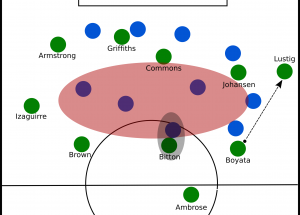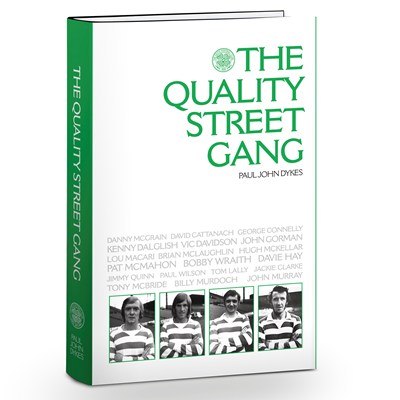There is much discussion on the Timternet just now and a whole range of opinions. Jack Lyons gives his theory below…..
“Celtic are terrible at the back, particularly in Europe” If I had a pound for every time I’d heard that over the last few months, and on the face of it, it’s very hard to argue. 42 goals conceded in 41 games doesn’t make for good reading, nor does 17 goals conceded in 12 European games.
However, rather than accepting a sweeping statement such as the one at the top, I had a feeling the problem perhaps lay in more specific areas, and so I collated the evidence to put together the table below, that your eye was probably drawn to long before you read this far, splitting those 42 goals across nine categories, based on what kind of situation they originated from.
On the back of that table, I’m going to look at some of the key areas of concern, and also show that there are some aspects which also make for better reading (as a Celtic supporter)
Counter attacks
As the source of almost 1 in 4 (10 in total) of Celtic’s goals conceded this season, counter attacks are the number one problem Celtic have at the back.
In the case of Celtic, and many other teams, the common cause for being caught on the counter is poor positional structure in possession. The two key issues created by a poor positional structure are:
- Less, and lower quality passing options for the player on the ball
- The team is poorly prepared for the defensive transition in the event it is lost.
In simple terms, poor positional structure means that since the player on the ball has limited options, giving the ball away is more likely, and when it is given away, the capacity to prevent a counter attack is massively limited. An perfect example of this is the scene below from Celtic’s 3-1 defeat in Molde this season.
Dedryck Boyata is on the ball, a mixture of poor positioning from his teammates, particularly a lack of central presence (red area), and the Molde pressing leaves an unlikely ball to Lustig as the only possible forward passing option. The ball is intercepted, and then the poor structure means that there are only 4 players in a position to defend the counter attack. 10 seconds later, the ball is in the Celtic net.
The increased prevalence of this issue this season can be attributed to opposition stronger on the counter attack, and the loss of Van Dijk and Denayer, who were far better equipped to deal with being exposed and isolated than the likes of Boyata, Simunovic and Ambrose.
Since Ronny Deila came to the club, the strong transitions the fans were promised have yet to be delivered, making this the most disappointing aspect (tactically) of his reign, and as the number one source of goals conceded, it’s something the manager will have to address if he wants to prolong his time at the club.
Set Pieces
Set pieces have been the most highlighted and perhaps the most surprising element of Celtic’s defensive failures this season. After being pretty solid in this area last season, 9 of the 42 goals Celtic have conceded this season have come from corners or free kick assists, over 20%, and what makes this issue all the more galling, is the tendency to concede from set pieces in big European games, specifically Ajax, Fenerbahce and most notably 3 against Malmo.
Poor defending from set pieces ultimately cost Celtic a place in this season’s Champions League. The explanation for these issues is still very much up for debate, the loss of Van Dijk and Denayer is a plausible cause, but Van Dijk was still very much around for the set piece disaster against Malmo, perhaps a dip in the confidence and performance of Craig Gordon (which I’ll explore more later) is the reason, and while zonal marking was highly criticised early on, the change towards a more man oriented system has done little to resolve the problem.
While the cause is yet unknown, a solution is required quickly, particularly before the next attempt at Champions League qualification. The defensive issues, coupled with a real lack of potency in an attacking sense suggests that perhaps the club ought to look at bringing in a specialist set piece coach, something done by the likes of Midtjylland to great success.
Bad Luck
Despite the undoubted defensive issues, in particular those addressed above, a factor which should still be considered is that, from a defensive standpoint, Celtic have experienced some bad luck, particularly in Europe.
The above table shows the “Expected Goals” conceded (xGa) by four sides in this season’s Europa League. Expected goals (explained in greater detail here) is a measure of the quality of chances a team creates/concedes in a game, by putting a specific value to each chance, based on the location of the shot, the shot type, and a range of factors around how the chance was created.
What the above total means is that the chances Celtic conceded, would on average result in 7.1 goals, and that while Rapid Wien, Spurs and Lech Poznan conceded chances of an almost identical value, they each conceded 6 goals, Celtic conceded 12.
Why the variance, and what does this all mean?
There is a growing body of evidence that large variance between expected goals and actual goals comes down to luck, rather than skill or “clinical finishing”(Messi being the exception) and so while Celtic were by no means excellent defensively, they were not 12 goals in 6 games bad. Michael Caley, the man behind the expected goals totals I’ve used, summed up the campaign in one fairly succinct line, which provides a nice link to my next point.
“Not great, but looking a little unfortunate/bad keeping(?) on the goals allowed side”
Craig Gordon was the hero of the 2014/15 Europa League group stage, this season, however, has been a very different story. In the 14/15 group, Gordon’s save percentage (% of shots on target saved) was 74% (78% excluding the bizarre dead rubber in Zagreb).
By contrast, that figure fell to 50% percent in the 15/16 group. Considering that 70% is the expected figure for a goalkeeper, what we observed was a small overperformance in 14/15, followed by a drastic underperformance in 15/16. It seems to make intuitive sense that these figures back up the commonly held idea that Gordon has had a poor season, but work from the likes of 11tegen11 has shown that save rate is effectively random, and is rarely consistent from any goalkeeper, irrespective of their “quality”.
Ultimately a save percentage of 50% is more attributable to the small sample of six games, and more bad luck. As mentioned previously, the bad luck that Celtic have experienced by no means absolves the team and/or the coaching staff of any poor performance and defensive frailty, it merely serves to demonstrate that the results on the park, and in particular the number of goals conceded, didn’t necessarily reflect the level of performance produced
Solid in the purest form of “defence”
Despite the perception that Celtic are “poor defensively”, in the most basic sense, they are actually fairly good at defending. Only 6 of the 42 goals Celtic have conceded this season have been via the opposition penetrating through the Celtic defence. The quality in this department has been displayed away to Qarabag and Ajax, Inter Milan last season, and most effectively in both ties against Fenerbahce, where huge individual blunders from Ambrose and Gordon respectively gifted Fener their only “big” chances over the 180 minutes and overshadowed two otherwise excellent defensive performances.
What does it all mean
The original purpose of this analysis was to address the all encompassing idea that Celtic have been poor at the back, and break down the more specific areas where Celtic are doing badly, and others where there are perhaps some positives to be taken. As far as the management is concerned, the conclusions drawn here are largely mixed.
There are undoubtedly major areas of concern which have not yet been addressed, but ought to be with some urgency. Exposure to the counter attack, and some awful set piece defending have been consistent problems, and the key defensive issues that have cost Celtic in high profile defeats, namely Malmo, Molde and both visits to Pittodrie.
On the other hand, there are factors which perhaps paint a slightly brighter picture for Ronny Deila. Celtic have been victims to some incredibly bad luck and individual errors in this season’s group stage which have masked the major defensive improvement from Deila’s first Europa League campaign, and in general the relative solidity at the back that the team, as a collective, have often shown.
You can find me on twitter @JLyonsFootball
Thanks to Seth (@226blog) for his bank of stats on Celtic, and for his help, as well as Michael Caley(@MC_of_A) for his Expected Goals information








